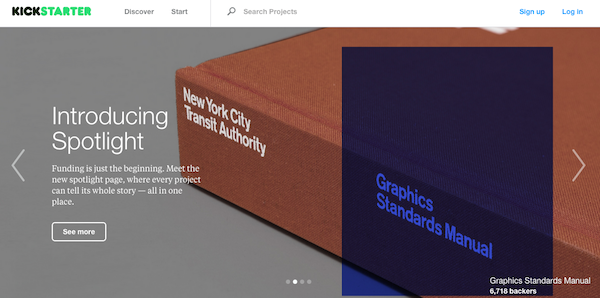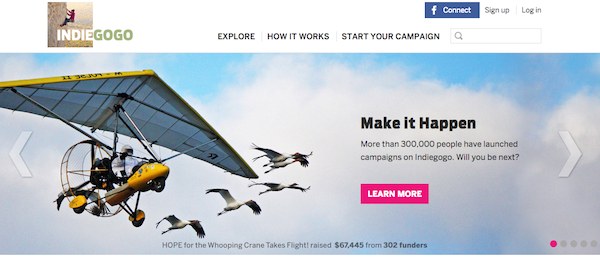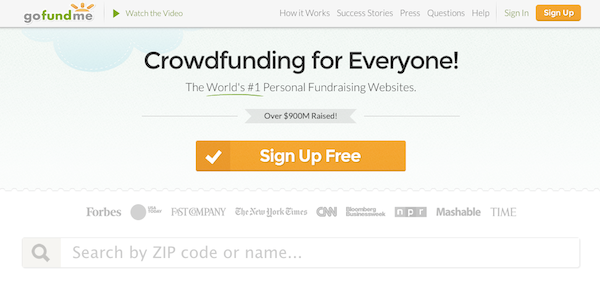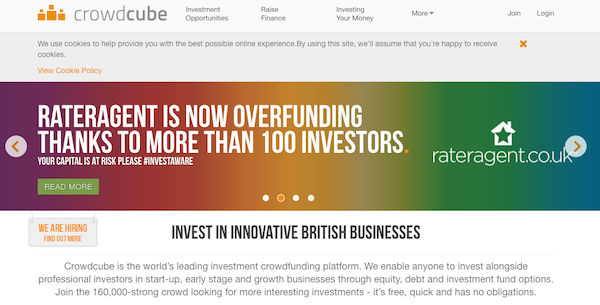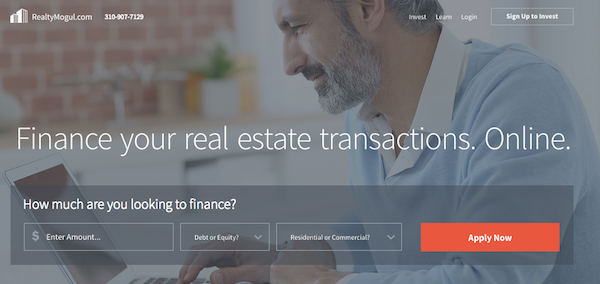In the past few years, crowdfunding has exploded as a new way to raise funds for startups, inventions, nonprofits, and even real estate investments.
We’ve covered some of the top crowdfunding websites for nonprofits, equity crowdfunding, real estate, peer to peer lending, peer to peer fundraising, personal fundraising, and more.
This list will break down the biggest players in the crowdfunding industry and the platforms that you need to know about if you are going to raise money online for a new gadget or creative work. If you haven’t already, I recommend going through our free crowdfunding 101 course (click here).
Unlike this website, which breaks down crowdfunding websites by traffic rank, I’ll be giving preference to websites that I recommend.
1. Kickstarter
Kickstarter has become synonymous with rewards-based crowdfunding, and for good reason. In 2014 alone, 22,252 projects were successfully funded to the tune of $529 million in terms of total dollars pledged.
The main difference between Kickstarter and these other crowdfunding websites are the strict requirements imposed on projects, the curation of the platform, and the fact that all projects must be just that, a project. You can’t raise money for a charity or to purely “fund expenses” like on GoFundMe or Indiegogo Life.
Finally, Kickstarter is an all-or-nothing crowdfunding platform, meaning that you must hit or exceed your goal in order to keep any of the funds raised at the end of your campaign.
Pricing: If successful, “Kickstarter’s 5% fee, and payment processing fees (between 3% and 5%).”
2. Indiegogo and Indiegogo Life
Indiegogo was actually founded before Kickstarter and has established a reputation of being a bit more of an open platform. The website accepts more international projects and also projects that fall into the “charity” arena on the subsection of their platform, Indiegogo Life.
Historically, Indiegogo has been a bit more aggressive in terms of rolling out new functionality has also taken a little more of an active role in recruiting projects based on the private conversations I’ve had with creators. However, I would be amiss if I didn’t point out that Kickstarter has also done a great job engaging creators with new initiatives. We also have an ongoing discussion comparing the two platforms here and here.
One of the big differences between Indiegogo and Kickstarter is that Indiegogo has a flexible funding option, which means that as a creator, you can keep what you raise at the end of your campaign, though you must still make good on your promises to ship out rewards to your backers.
Pricing: “When your campaign raises funds, Indiegogo charges a 9.0% fee on the funds you raise. If you reach your goal, you get 5.0% back, for an overall fee of 4.0%.” There are also payment processing fees
Indiegogo Life Pricing: Indiegogo Life features a 0% platform fee with a 3% payment processing fee.
3. GoFundMe
GoFundMe has arisen as the leader in the personal fundraising space, having helped individuals raise $470M in 2014 and nearly $1 billion in total dollars. Popular categories include raising money for medical costs, volunteer initiatives, and education, though they also feature business and creative categories.
Although we do see some personal fundraising campaigns go viral on social media and raise thousands or hundreds of thousands of dollars, the vast majority of GoFundMe projects raise ~$1k and mainly from the individual’s social network. Therefore, GoFundMe should be looked at a software solution to raise funds for a cause or yourself.
Pricing: 5% + ~3% payment processing fee.
4. CrowdCube
CrowdCube is one of the leaders in the UK equity crowdfunding marketplace that has helped companies raise £15 million in 2014, but the website has already broken that record in the first quarter of 2015, which saw £17.5 million raised by companies on CrowdCube.
The company has facilitated the investment of over $100 million in US dollars for startups and established businesses in the UK.
Pricing: You can view a comprehensive overview of the website’s pricing here.
5. EquityNet and More.
In the United States, the crowdfunding portion of the JOBS Act has yet to been fully enacted at the time of writing and it’s difficult to discern any clear winner in the equity crowdfunding space.
That being said, EquityNet has stood out to me as not only being transparent with their statistics, but also having the largest amount raised to date, which clocks in at $284 million in funds raised by entrepreneurs (funds raised by entrepreneurs as reported individually to EquityNet).
However, investment transactions do not actually happen on EquityNet. “EquityNet does not handle transactions. When an investor wants to invest in an EquityNet company, they will message the entrepreneur and schedule a time to discuss the investment. The investment will happen outside of EquityNet.”
Fundable also has indicated that they have helped raise $161 million worth of funds for companies in equity, debt, and royalty-based capital. I do think we’re going to see AngelList get more heavily into the equity crowdfunding arena as time goes on. In addition, as of March 2014, “CircleUp has helped more than 30 companies raise over $30 million in growth capital in the past two years” (Source). Crowdfunder has funded 13 deals in the seed and Series A stage as of early 2014, with an average deal size of about $1.2 million (source).
6. Realty Mogul
The real estate crowdfunding industry has exploded in the last two years. Thus far, Realty Mogul and Fundrise and have appeared to lead the charge with about $64 million invested with RealtyMogul and $10 million invested in the first quarter of 2015.
Thus far, real estate crowdfunding seems to be the breakout child of equity crowdfunding as a whole, with many notable investments in 2014.
7. Lending Club
Although “peer to peer lending” is a more common term than “debt crowdfunding,” I decided to include the financial tool in this list, as it is an alternative way for entrepreneurs or individuals to secure capital or funds.
“77.41% of Lending Club borrowers report using their loans to refinance existing loans or pay off their credit cards as of 12/31/14.” 1.57% of Lending Club’s total loans are business loans.
In the last quarter of 2014 alone, Lending Club facilitated $1.4 billion in loans, and it’s only increasing. The company, which had an IPO in late 2014, valuing the company around $8 billion.
Pricing: You can learn more about their pricing here.
Which platform did we leave out?
Let me know in a comment below! I’d also love to hear about your experience raising money on some of these platforms!
It might be hard to believe, but nearly 1,000 companies have formed in the crowdfunding industry (according to AngelList). I think we’ve only seen the early stages of crowdfunding and there will be a lot of exciting new changes to watch in the years ahead!


